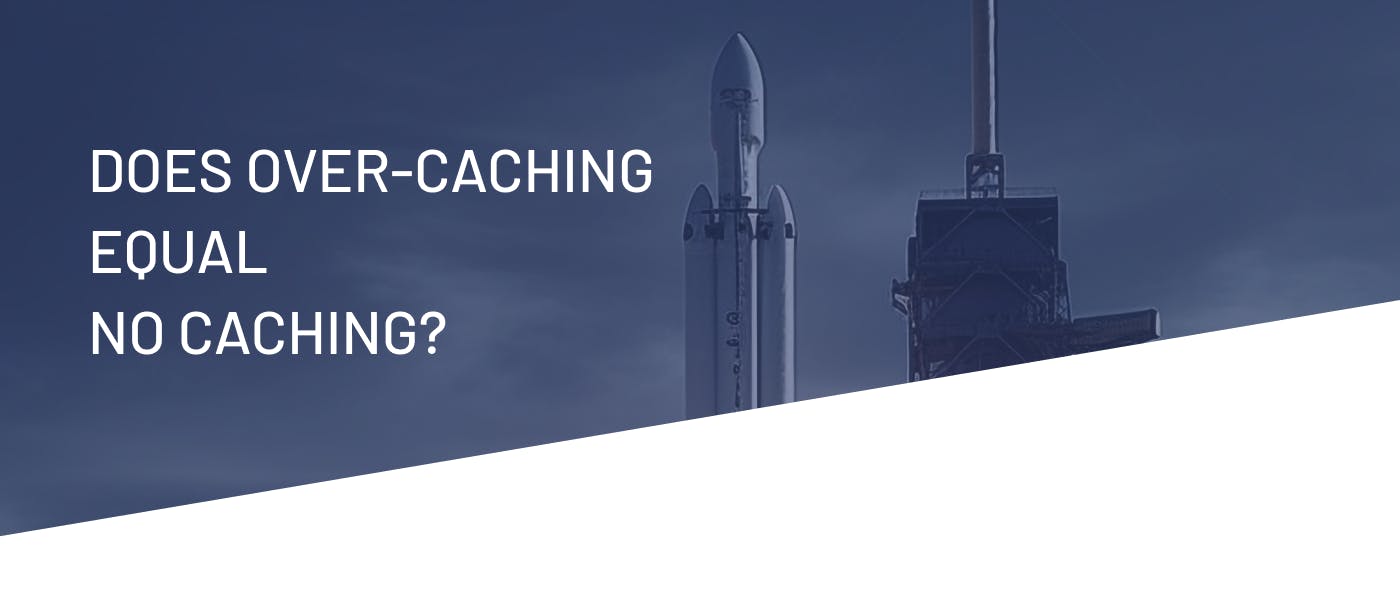We all know the rule of thumb: if you want to make a system faster, throw in some cache. A CDN layer here, an app cache there, a browser hint, maybe a bit of database memoization — it all feels harmless enough. The thing is that caching is a double-edged sword: easy to sprinkle in, much harder to manage responsibly.
Pushed too far, it turns into a liability that drags your platform down at scale. I’ve seen over-caching cripple performance just as badly as having no cache at all, only with failures that are harder to spot and far messier to untangle.
The False Comfort of More Caching
Over-caching creeps in when caches are added everywhere without asking whether they truly earn their place. This way, instead of accelerating responses, the system is likely to spend more time maintaining caches than serving real data. And instead of performance gains, you get performance degradation.
The hard part is that these failures don’t always look obvious. Over-caching tends to lock in subtle issues that should have surfaced quickly, like a miscalculated price or a stale 404 response. When I faced the issue where a cache that was supposed to speed up access to frequently queried data served instead stale and deleted records, the best move was to remove the cache entirely.
That’s the danger of over-caching: it creates the illusion of efficiency while quietly burying bugs and slowing the system down.
When Caching Spends More Than It Saves
One more trap with over-caching is the
That’s especially true when caches are filled with work that is cheaper to recompute than store. It’s usually about simple calculations or trivial lookups.
Still, it’s rarely that black and white. On one project, my team dealt with URL routing. With fixed data and predictable flow, it seemed like a typical textbook case with no cache needed. Yet in Java, the pattern matching wasn’t as lightweight as it appeared. Under load, those calls started to add noticeable drag, and a cache for URL-to-action mappings made the difference.
That’s the cost trap: over-caching drains resources when it’s blind, but pays off when it’s precise. The hard part is knowing which side of that line your system is actually on.
Signs You’re Over-Caching
As the earlier example showed, even what looks like obvious over-optimization can make sense once you account for system quirks. That’s why it’s hard to point to universal signs that apply everywhere. Still, from my practice, I keep noticing the same common patterns:
- You’re caching operations that are already fast. If something takes microseconds to compute, wrapping it in a cache adds more overhead than benefit. The cache machinery — lookups, memory use, invalidation — costs more than the work you’re avoiding.
- You’re chasing micro-optimizations (e.g., 500ms to 200ms). Driving requests down from half a second to a fraction looks impressive on paper, but users don’t notice. What they do notice are the bugs and complexity that come from caching too aggressively for gains that don’t matter.
- Your cache is filled with low-priority objects. When rarely used results take up space, critical data gets evicted. Memory ends up holding onto leftovers while the data that actually affects performance or UX is pushed out.
- You’re caching objects so heavy that serialization costs outweigh reuse. Complex objects stored “just in case” can cost more to serialize, store, and fetch than to recompute. If the cache path is slower than fresh execution, that’s a clear sign it doesn’t belong.
- You’re fixing incidents by clearing the cache. If the reliable solution to outages is hitting “purge,” the cache isn’t helping, but hiding issues. Worse, clearing everything widens the blast radius, taking good data down with the bad.
Smarter Alternatives: Cache Less, Cache Right
The antidote to over-caching is being selective. Focus on the data that rarely changes or that you can reliably track for changes. If you’re caching things like prices or stock levels that sync with external systems, you also need a plan for freshness. Otherwise, the cache can quickly become a liability.
Not every request deserves a cache, either. Cloud databases, for instance, are already tuned for typical access patterns, and an extra cache layer can add complexity without moving the needle.
System specifics also matter. To extend the example with Java, I can also name ecommerce setups where product data was tightly integrated with an ERP system and changed far too quickly for traditional caching to keep up. In that case, pushing data into a search engine with built-in freshness and caching worked far better than fighting with a fragile application-level cache.
Another practical move is not to treat all the content within one page the same. A product detail page (PDP) can be a great example. Trying to wrap the whole page in a single cache either shows outdated data or forces constant invalidations. The better approach is modular: cache the static parts safely, and handle the volatile pieces with optimized queries or real-time retrieval.
In one project, we even pulled Solr into the PDP — unusual outside search or category pages — to fetch heavy product variant data quickly, while trimming Flexible Search queries on the back-end. The result was a faster page that stayed fresh where it mattered.
The Discipline Behind the Cache
Caching is meant to buy speed, but the wrong move buys you trouble instead. Sometimes it drags a system down just as badly as having no cache at all. You hit a problem, layer in cache to “fix” it, but end up with no real improvement, just the false comfort that the job is done.
The parallel isn’t accidental, as both over-caching and no caching fail for the same reason: they ignore how the system actually behaves. What matters isn’t adding more layers or stripping them away, but putting the right cache in the right place, where it earns its keep. That’s the real discipline: knowing when a cache accelerates, and when it’s just ballast.


